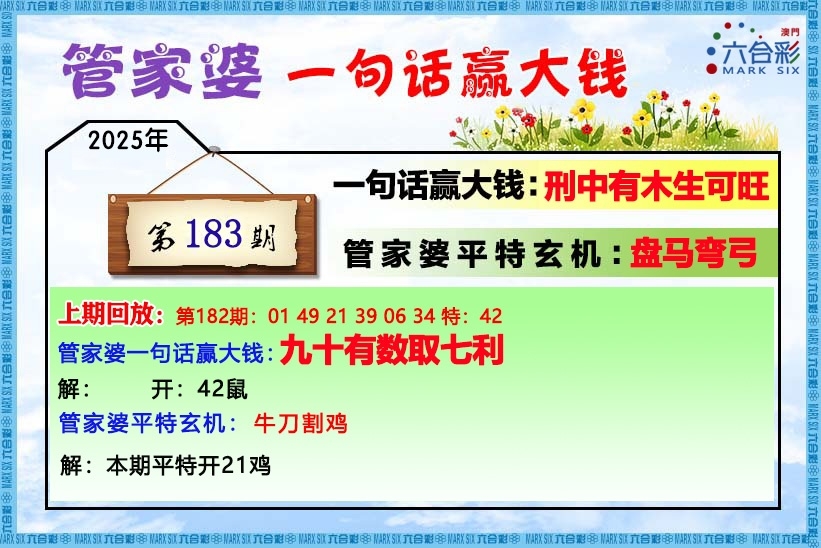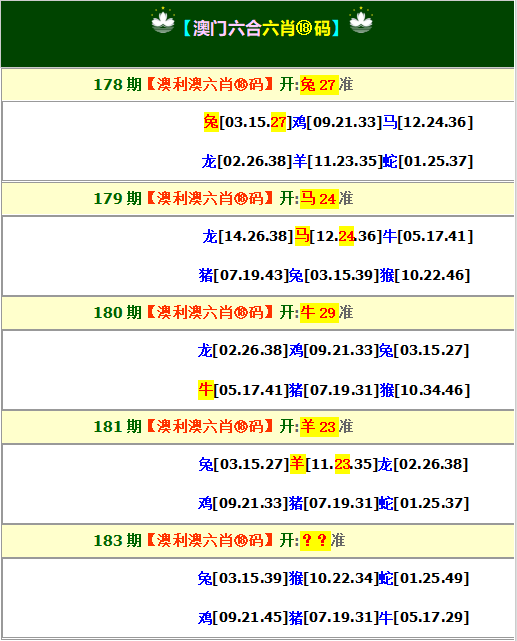官方易記域名:
新澳門免費精準(zhǔn)龍門客棧,澳門一碼一肖一待一中四不像一,澳門最精準(zhǔn)免費資料大全旅游團(tuán),澳門慈善精準(zhǔn)資料大全,新奧精準(zhǔn)免費提供網(wǎng)址,新澳門內(nèi)部精準(zhǔn)公開,2025全年免費資料大全,新澳精準(zhǔn)資料,最準(zhǔn)一肖100%中一獎,新澳門最精準(zhǔn)確精準(zhǔn)龍門,2025澳門精準(zhǔn)正版免費大全簡介,2025年新澳天天開好彩資料,2025澳門精準(zhǔn)正版免費,新奧門免費資料大全在線查看,2025新澳門精準(zhǔn)免費大全數(shù)據(jù)解答,管家婆期期準(zhǔn)四肖四碼,新奧最精準(zhǔn)免費提供,新奧精準(zhǔn)免費提供港澳彩,澳門慈善資料免費大全,7777788888精準(zhǔn)一肖中特,管家婆100中獎,2025年正版資料免費大全,澳門最精準(zhǔn)正最精準(zhǔn)龍門蠶,2025全年資料免費,2025精準(zhǔn)資料免費解答,2025澳門正版免費精準(zhǔn)大全,2024正版資料免費大全,新澳門最精準(zhǔn)正最精準(zhǔn)查詢,新奧天天開獎資料大全的推薦,澳門最準(zhǔn)資料大全免費,2025新澳今晚開獎結(jié)果,2025新澳門精準(zhǔn)免費大全,100%最準(zhǔn)的一肖,澳門正版免費大全精準(zhǔn),2025年天天開彩免費資料,7777788888新版跑狗 圖,7777788888王中王開獎十記錄網(wǎng)一,2025精準(zhǔn)免費資料查詢,新澳門精準(zhǔn)正版免費,澳門一碼一肖一待一中四,2025新澳門特馬今晚開獎掛牌,新澳門王中王100期期中,澳門天天開彩期期精準(zhǔn),澳門六和資料查詢2025,2025年澳門正版大全,新澳門管家婆100%期期中,2025今晚必中必開一肖,澳門新奧9點35,新澳天天開獎資料大全最新版,新澳今天晚上9點30分
港彩高手出版精料
澳門精華區(qū)
香港精華區(qū)
- 182期:【貼身侍從】必中雙波 已公開
- 182期:【過路友人】一碼中特 已公開
- 182期:【熬出頭兒】絕殺兩肖 已公開
- 182期:【匆匆一見】穩(wěn)殺5碼 已公開
- 182期:【風(fēng)塵滿身】絕殺①尾 已公開
- 182期:【秋冬冗長】禁二合數(shù) 已公開
- 182期:【三分酒意】絕殺一頭 已公開
- 182期:【最愛自己】必出24碼 已公開
- 182期:【貓三狗四】絕殺一段 已公開
- 182期:【白衫學(xué)長】絕殺一肖 已公開
- 182期:【滿目河山】雙波中 已公開
- 182期:【寥若星辰】特碼3行 已公開
- 182期:【凡間來客】七尾中特 已公開
- 182期:【川島出逃】雙波中特 已公開
- 182期:【初心依舊】絕殺四肖 已公開
- 182期:【真知灼見】7肖中特 已公開
- 182期:【四虎歸山】特碼單雙 已公開
- 182期:【夜晚歸客】八肖選 已公開
- 182期:【夏日奇遇】穩(wěn)殺二尾 已公開
- 182期:【感慨人生】平特一肖 已公開
- 182期:【回憶往事】男女中特 已公開
- 182期:【瘋狂一夜】單雙中特 已公開
- 182期:【道士出山】絕殺二肖 已公開
- 182期:【相逢一笑】六肖中特 已公開
- 182期:【兩只老虎】絕殺半波 已公開
- 182期:【無地自容】絕殺三肖 已公開
- 182期:【涼亭相遇】六肖中 已公開
- 182期:【我本閑涼】穩(wěn)殺12碼 已公開
- 182期:【興趣部落】必中波色 已公開
【管家婆一句話】

【六肖十八碼】

天天好彩【六肖中特】
天天好彩【平尾心水秘籍】
天天好彩【幽默猜測】
天天好彩澳門正版圖庫
- 澳門四不像
- 澳門傳真圖
- 澳門跑馬圖
- 新掛牌彩圖
- 另版跑狗圖
- 老版跑狗圖
- 澳門玄機(jī)圖
- 玄機(jī)妙語圖
- 六麒麟透碼
- 平特一肖圖
- 一字解特碼
- 新特碼詩句
- 四不像玄機(jī)
- 小黃人幽默
- 新生活幽默
- 30碼中特圖
- 澳門抓碼王
- 澳門天線寶
- 澳門一樣發(fā)
- 曾道人暗語
- 魚躍龍門報
- 無敵豬哥報
- 特碼快遞報
- 一句真言圖
- 新圖庫禁肖
- 三怪禁肖圖
- 正版通天報
- 三八婆密報
- 博彩平特報
- 七肖中特報
- 神童透碼報
- 內(nèi)幕特肖B
- 內(nèi)幕特肖A
- 內(nèi)部傳真報
- 澳門牛頭報
- 千手觀音圖
- 夢兒數(shù)碼報
- 六合家寶B
- 合家中寶A
- 六合簡報圖
- 六合英雄報
- 澳話中有意
- 彩霸王六肖
- 馬會火燒圖
- 狼女俠客圖
- 鳳姐30碼圖
- 勁爆龍虎榜
- 管家婆密傳
- 澳門大陸仔
- 傳真八點料
- 波肖尾門報
- 紅姐內(nèi)幕圖
- 白小姐會員
- 白小姐密報
- 澳門大陸報
- 波肖一波中
- 莊家吃碼圖
- 發(fā)財波局報
- 36碼中特圖
- 澳門男人味
- 澳門蛇蛋圖
- 白小姐救世
- 周公玄機(jī)報
- 值日生肖圖
- 鳳凰卜封圖
- 騰算策略報
- 看圖抓碼圖
- 神奇八卦圖
- 新趣味幽默
- 澳門老人報
- 澳門女財神
- 澳門青龍報
- 財神玄機(jī)報
- 內(nèi)幕傳真圖
- 每日閑情圖
- 澳門女人味
- 澳門簽牌圖
- 澳六合頭條
- 澳門碼頭詩
- 澳門兩肖特
- 澳門猛虎報
- 金錢豹功夫
- 看圖解特碼
- 今日閑情1
- 開心果先鋒
- 今日閑情2
- 濟(jì)公有真言
- 四組三連肖
- 金多寶傳真
- 皇道吉日圖
- 澳幽默猜測
- 澳門紅虎圖
- 澳門七星圖
- 功夫早茶圖
- 鬼谷子爆肖
- 觀音彩碼報
- 澳門不夜城
- 掛牌平特報
- 新管家婆圖
- 鳳凰天機(jī)圖
- 賭王心水圖
- 佛祖禁肖圖
- 財神報料圖
- 二尾四碼圖
- 東成西就圖
- 12碼中特圖
- 單雙中特圖
- 八仙指路圖
- 八仙過海圖
- 正版射牌圖
- 澳門孩童報
- 通天報解碼
- 澳門熊出沒
- 鐵板神算圖
澳門天天好彩免費資料大全
- 殺料專區(qū)
- 獨家資料
- 獨家九肖
- 高手九肖
- 澳門六肖
- 澳門三肖
- 云楚官人
- 富奇秦準(zhǔn)
- 竹影梅花
- 西門慶料
- 皇帝猛料
- 旺角傳真
- 福星金牌
- 官方獨家
- 貴賓準(zhǔn)料
- 旺角好料
- 發(fā)財精料
- 創(chuàng)富好料
- 水果高手
- 澳門中彩
- 澳門來料
- 王中王料
- 六合財神
- 六合皇料
- 葡京賭俠
- 大刀皇料
- 四柱預(yù)測
- 東方心經(jīng)
- 特碼玄機(jī)
- 小龍人料
- 水果奶奶
- 澳門高手
- 心水資料
- 寶寶高手
- 18點來料
- 澳門好彩
- 劉伯溫料
- 官方供料
- 天下精英
- 金明世家
- 澳門官方
- 彩券公司
- 鳳凰馬經(jīng)
- 各壇精料
- 特區(qū)天順
- 博發(fā)世家
- 高手殺料
- 藍(lán)月亮料
- 十虎權(quán)威
- 彩壇至尊
- 傳真內(nèi)幕
- 任我發(fā)料
- 澳門賭圣
- 鎮(zhèn)壇之寶
- 精料賭圣
- 彩票心水
- 曾氏集團(tuán)
- 白姐信息
- 曾女士料
- 滿堂紅網(wǎng)
- 彩票贏家
- 澳門原創(chuàng)
- 黃大仙料
- 原創(chuàng)猛料
- 各壇高手
- 高手猛料
- 外站精料
- 平肖平碼
- 澳門彩票
- 馬會絕殺
- 金多寶網(wǎng)
- 鬼谷子網(wǎng)
- 管家婆網(wǎng)
- 曾道原創(chuàng)
- 白姐最準(zhǔn)
- 賽馬會料















